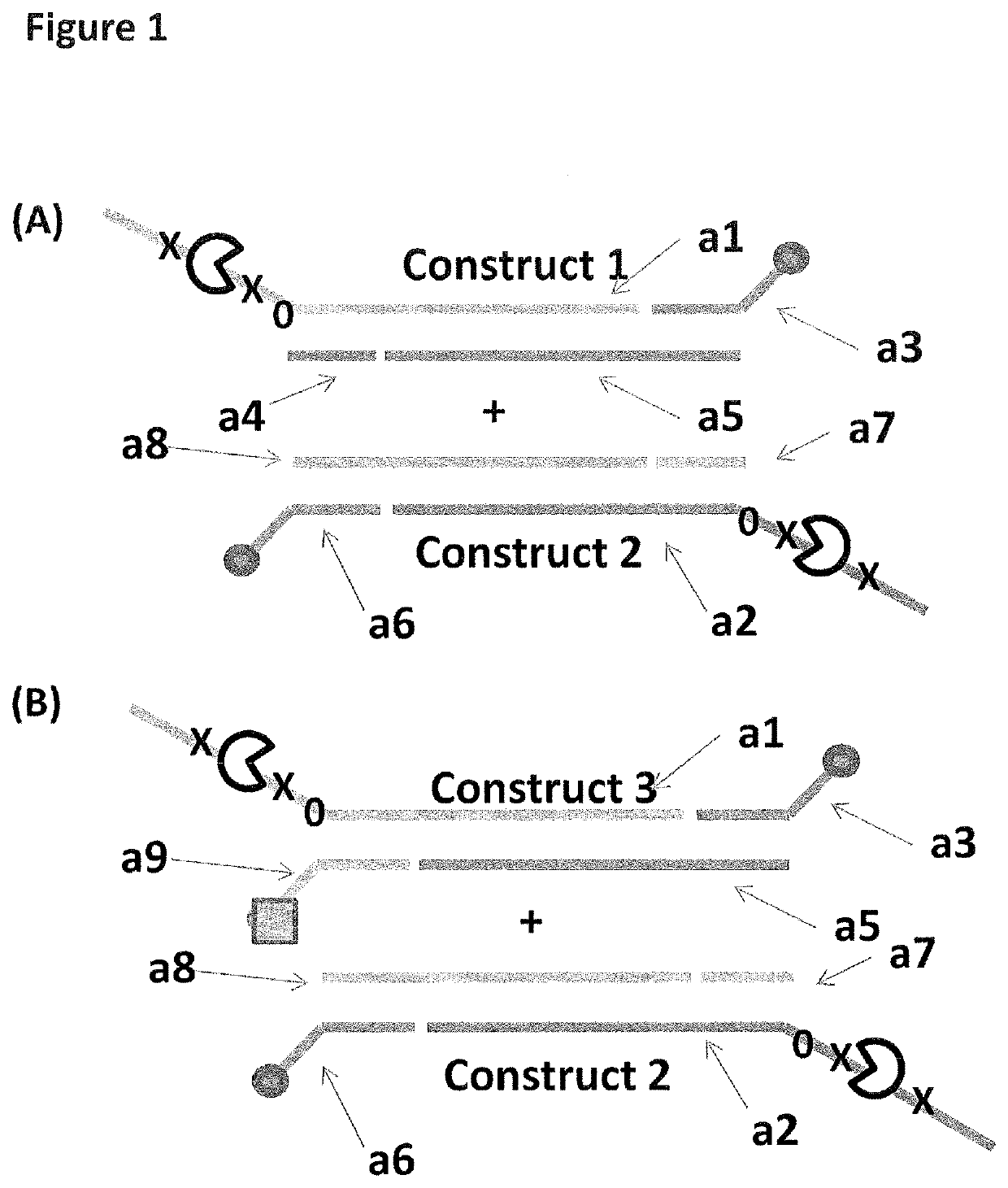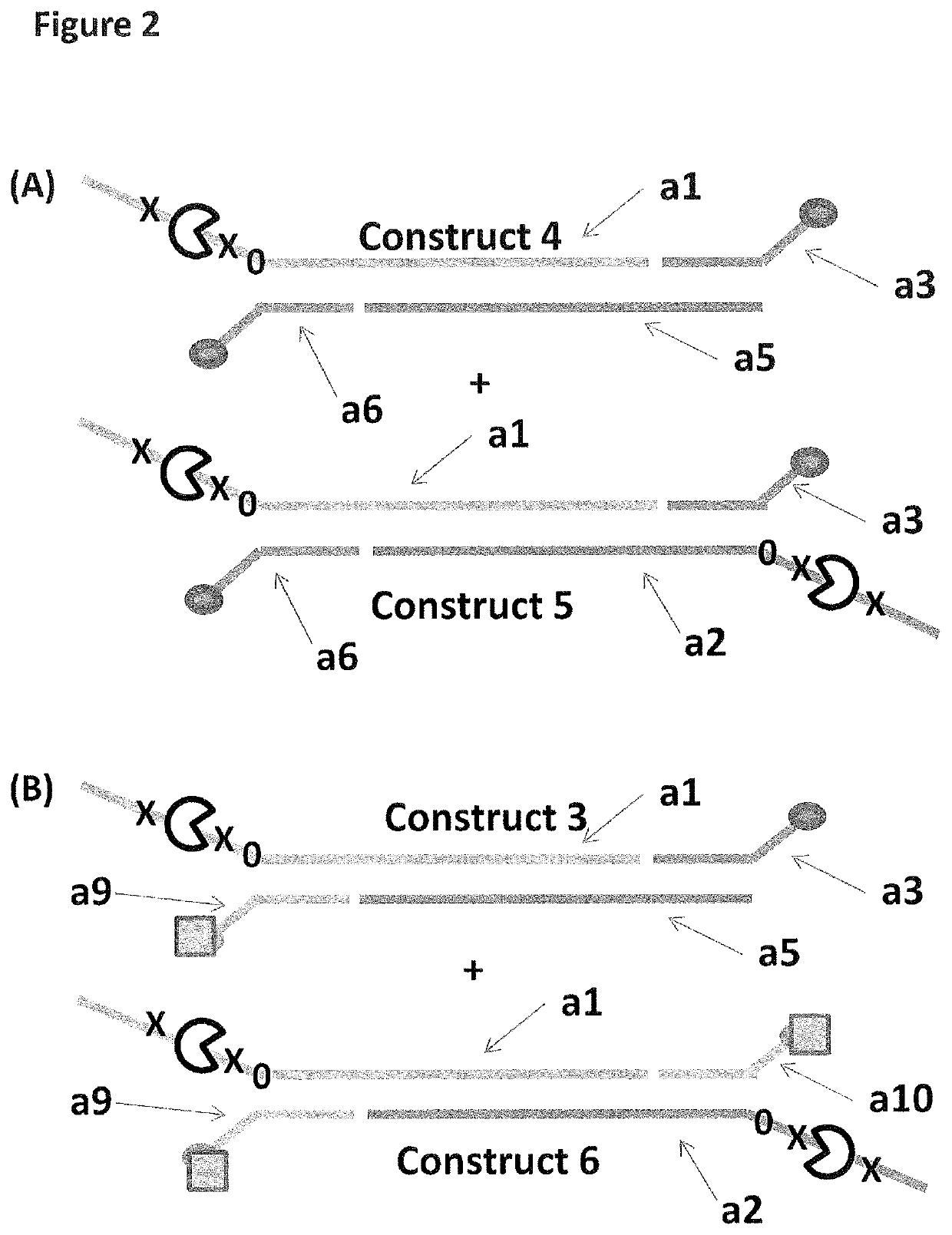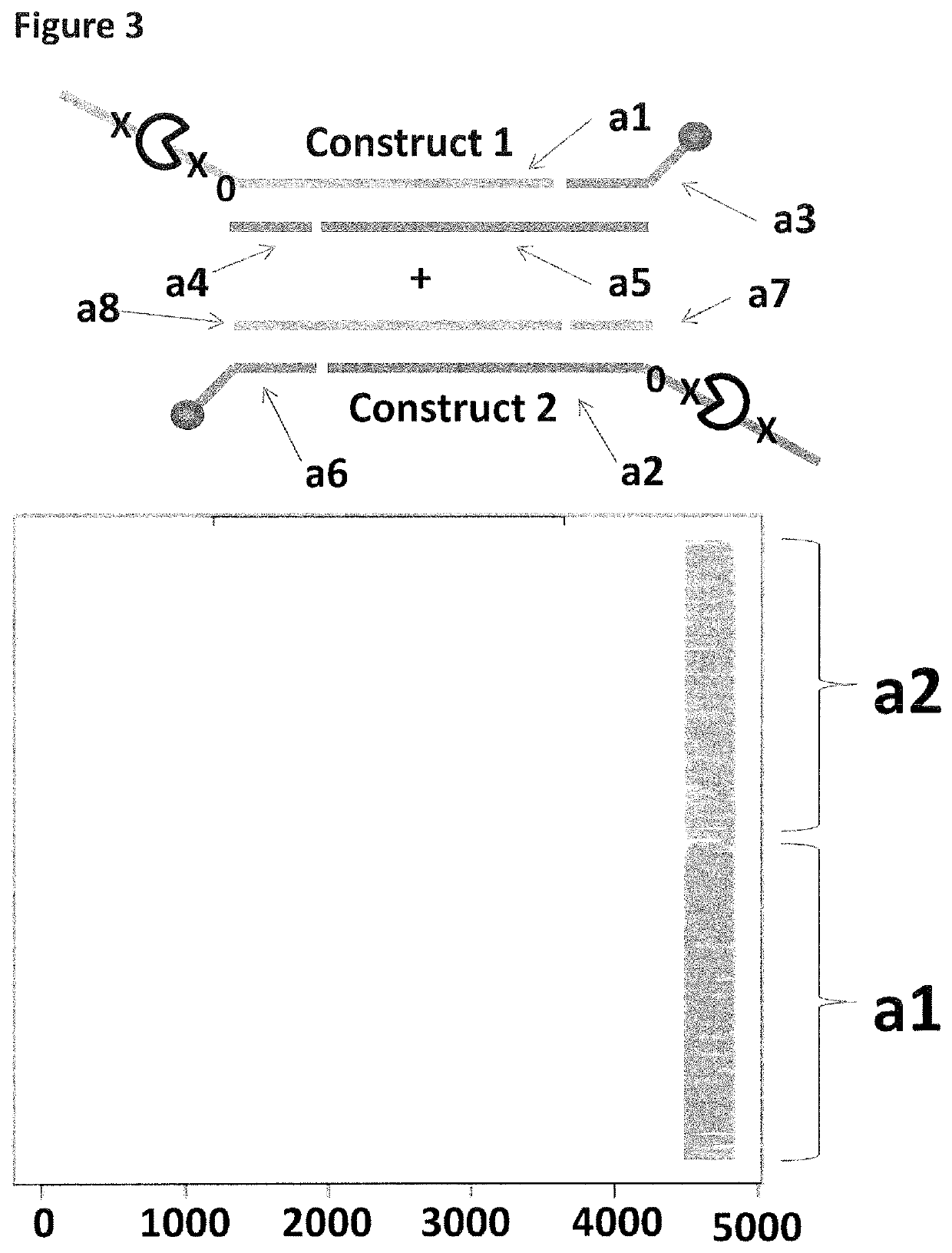Method for characterising a double stranded nucleic acid using a nano-pore and anchor molecules at both ends of said nucleic acid
a nucleic acid and nano-pore technology, applied in the field of characterisation, can solve the problems of slow and expensive technology, and achieve the effect of increasing strength
- Summary
- Abstract
- Description
- Claims
- Application Information
AI Technical Summary
Benefits of technology
Problems solved by technology
Method used
Image
Examples
example 1
[0320]This example describes the sample preparation procedure for the DNA constructs 1-6 shown in FIGS. 1 and 2 and used in Examples 2 and 3.
Materials and Methods
[0321]The strands used in this study are from a region of the lambda genome, between 45,042 bp and 48,487 bp. Analytes were made by the polymerase PCR method to include hybridisation sites at defined ends of each of the template and template complement strands as desired. PCR was carried out from lambda genomic DNA.
[0322]This template (SEQ ID NO: 29 hybridised to 30) was made using KAPA HiFi 2× Master mix, lambda DNA (NEB) and primers SEQ ID NO: 31 and SEQ ID NO: 32. Reactions were cycled 20 times and product of the correct size was purified by Gel Filtration on Sephacryl S1000 column and concentrated to 0.25 mg / ml using Millipore Ultracel 15 50 kDa concentrators.
[0323]DNA constructs (1, 2, 3, 4, 5 and 6) for electrophysiology experiments were all made according to the same reaction mix, 2× LongAmp Taq master mix, 300 nM of...
example 2
[0331]This example compares the use of a single anchor to couple constructs to a membrane to that of two anchors of differing strengths again used to couple constructs to a membrane. Two anchors were employed in order to bias, the helicase-controlled DNA movements detected by the nanopore system, towards the construct which was doubly coupled to the membrane.
Materials and Methods
[0332]Prior to setting up the experiment, the DNA constructs either 1 and 2 or 2 and 3 (stock concentration 20 nM, final concentration added to nanopore system 0.1 nM) were separately pre-incubated at room temperature for five minutes with T4 Dda-E94C / A360C (stock concentration 250 nM, final concentration added to nanopore system 1 nM, SEQ ID NO: 24 with mutations E94C / A360C) in buffer (151 mM KCl, 25 mM phosphate, 2 mM EDTA, pH8.0). After five minutes, TMAD (500 μM) was added to the pre-mix and the mixture incubated for a further 5 minutes. Finally, MgCl2 (10 mM final concentration), ATP (2.5 mM final conce...
example 3
[0336]This example compares the use of two anchors of equal strength (double cholesterol constructs 4 and 5 or double palmitate construct 6) to two anchors of differing strengths (palmitate and cholesterol construct 3).
Materials and Methods
[0337]DNA constructs 4 and 5 or 3 and 6 were pre-incubated with T4 Dda-E94C / A360C helicase as described in Example 2 above.
[0338]Electrical measurements were acquired from single MspA nanopores (MspA-B2C) inserted in block co-polymer in buffer as described in Example 2 and helicase-controlled DNA movements for constructs 4 and 5 or 3 and 6 were monitored.
Results and Discussion
[0339]For the control experiment, helicase-controlled DNA movement of constructs 4 and 5 was monitored. The cartoon at the top of FIG. 5 shows where the helicase can bind to constructs 4 (only on a1) and 5 (on at and a2). Strand a1 of construct 4 was capable of being captured by the nanopore, whereas, strand a1 or strand a2 of construct 5 were capable of being captured by the...
PUM
 Login to View More
Login to View More Abstract
Description
Claims
Application Information
 Login to View More
Login to View More - Generate Ideas
- Intellectual Property
- Life Sciences
- Materials
- Tech Scout
- Unparalleled Data Quality
- Higher Quality Content
- 60% Fewer Hallucinations
Browse by: Latest US Patents, China's latest patents, Technical Efficacy Thesaurus, Application Domain, Technology Topic, Popular Technical Reports.
© 2025 PatSnap. All rights reserved.Legal|Privacy policy|Modern Slavery Act Transparency Statement|Sitemap|About US| Contact US: help@patsnap.com



